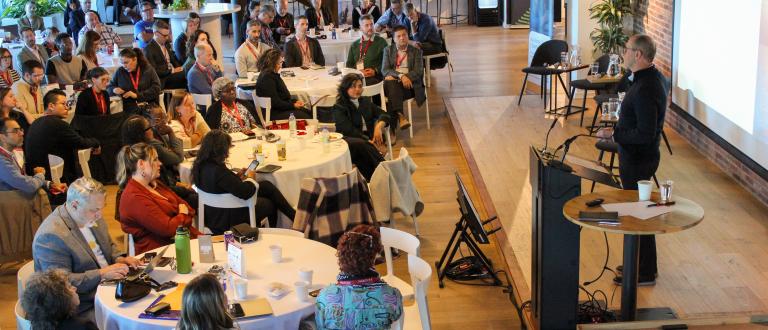Canada is experiencing an increase in inflation that has not been seen in decades. In February 2022, the CPI increased 5.7% compared to a year ago, and represents the largest increase in inflation in over two decades (since August 1991). The 1% increase in inflation from January 2022 to February 2022 is the largest monthly increase since February 2013. In our everyday lives, inflation is reflected as a general increase in the prices of goods and services in the economy. Shelter costs have been rising at their fastest year-over-year pace since 1983, and rental accommodation costs have increased by 4.2%.
Inflation increases when production costs or demand rises, as both changes result in higher prices for a product. Current events are major factors that influence inflation, for example, the current increase in gas prices is largely due to geopolitical conflict in the Middle East and Eastern Europe.
Inflation – which is typically measured by the Consumer Price Index (CPI) – is relevant because it decreases the purchasing power of money – that is, how much a person can purchase with a given sum of money. For example, the same basket of goods that would have cost $100 in 2000 would now cost a person $156 in 2022. This is commensurate with a decline in the value of money of 2.04% each year. In other words, the sum of money that could purchase $100 in goods in 2000 can only purchase approximately $64 of goods today.
Impact of Rising Inflation on Charities and Nonprofits
The erosion of money’s purchasing power caused by the high inflation we are experiencing today has many impacts on charities and nonprofits, some of which are unique to their sector. The latest survey of consumer expectations from the Bank of Canada finds that among the Canadians surveyed, 57% reported being more concerned about inflation in November 2021 than at the beginning of the pandemic. In addition, Canadians surveyed perceived public authorities to have less ability to control inflation, citing reasons including climate change that extend beyond the pandemic. Notably, Canadians reported that they view inflation as the most important economic variable, above taxes and jobs.
The survey also found that workers do not anticipate that wage growth will keep up with inflation (most workers' wages are not adjusted to inflation). This long-term trend creates an expectation among workers that they will have less disposable income in the near future.
Increasing demand for services
First, inflation puts additional financial pressures on low-income individuals and families, which in turn increases demand for services provided by nonprofits that are needed to meet community needs. In the past year, unusually high inflation rates have amounted to pay cuts and a loss of purchasing power for both workers and organizations. This loss of purchasing power disadvantages low-income families and individuals who were already struggling to meet their needs and relied on nonprofit services to supplement their incomes.
Charities and nonprofits are designed to fill the gaps in the social safety net and the demand for their services is correlated with government shortcomings to enact supportive policies that foster economic independence. When wages cannot keep up with the cost of living, individuals and families are forced to rely on nonprofit services such as food banks, clothing distribution centers, shelters, health centers, and sports and recreation programs to meet their needs.
Decrease in purchasing power
At the same time, the charitable and nonprofit sector must find ways to meet the growing demand despite their purchasing power declining. For organizations within the sector that provide low-cost services, run social enterprises or engage in revenue generating activities, data from Statistics Canada shows that costs may in some cases be passed on to clients. Roughly 10% of nonprofit organizations indicated they were very likely to pass on any increases in costs to customers, below the average of 35% for all businesses & organizations. In cases where it is essential to pass on costs to clients to maintain services, there are concerns over affordability. But, unlike most other sectors, many charities and nonprofits deliver their services for free and are unable to pass rising costs along to consumers in the form of higher prices. All the increases in cost, including wages, rent, and supplies, need to be absorbed by the charity or nonprofit. For organizations that require a physical space in central locations of the cities in which they operate, rising rents can be particularly challenging.
Decrease in real funding
The impact of lower wage growth relative to inflation may have serious consequences for the ability of charities and nonprofits to raise funds from donors. People’s willingness to donate is often correlated with their excess income. As consumers feel the decrease in their purchasing power, they are less likely to donate. While monthly donations provide charities and nonprofits with predictable, secure funding over time, those amounts do not increase with inflation. Studies show that individuals tend to give round amounts ($10, $20, $50). Therefore, unless donors are choosing to give larger one-time sums, those donations will not have the same impact as in previous years.
This reality applies to government funding as well, multi-year funding that does not have inflationary pressures built-in will essentially decrease each year. The stability promised by multi-year funding that does not account for inflation makes it more difficult for organizations to fill the gaps that were initially created as shortcomings in government policies.
Actions for Improvement
There are various steps that governments and the nonprofit sector can take to reduce the strain on charities and nonprofits as inflation rises.
Poverty alleviation is a proven mechanism that reduces reliance on organizations that support low-income persons. For example, public policies such as increases to the minimum wage and greater investments in income assistance and disability benefits reduce reliance on food banks. Increasing rent is another factor that drives food bank and shelter usage, highlighting the potential for rent control and other housing regulations to effectively lower the demand for services provided through the nonprofit and charitable sector.
In addition, government funding agreements should imbed inflationary increases into the agreements. Nonprofits and charities that provide services for free should be prioritized in amending funding agreements as they feel the strain of inflation most acutely. Different subsectors of the nonprofit and charitable sector will feel the impacts of inflation differently, and government funding agreements should target those hardest hit. Implementing a flexible approach requires refined metrics to understand and address the harms of inflation for charities and nonprofits to ensure that all organizations are receiving equitable support.
In order to avoid the same issue of the falling real value of multi-year donations, charities and nonprofits should inform donors on the reality of how inflation impacts their organizations and offer the option to make inflation-adjusted donations. For one-time donations, this can be more complicated but using a clear example of how much can be done with set donations amounts can be a helpful tool. Even over the span of a single year, the impact of inflation is noticeable to the organization but likely could be absorbed by a donor. Donor behaviour can be changed through consistent campaigns, especially if coordinated among multiple organizations.
As inflation continues to rise, charities and nonprofits must find ways to adapt to the shifting economic conditions without compromising the services they offer. Multi-year government funding and donations offer organizations financial security and stability; however, imbedding inflationary increases into funding agreements can ensure that the value of the funding isn’t slightly eroded each year. Educational campaigns targeted towards donors can bring that conversation to the public, strengthening the conversation around the value of the donation given. Most importantly, all levels of government have the responsibility of ending poverty and drastically improving the material conditions of everyone living in Canada.
The policy recommendations included in this guest contribution represent the personal opinions and insights of the authors and may not reflect the views or opinions of Imagine Canada.
Acknowledgements
This project was made possible thanks to generous support from our Lead Partner, BULLWEALTH.

BULLWEALTH is an investment advisory and consulting firm with a global perspective. At BULLWEALTH we invest our time to understand our clients needs and share our insights, so together we can make the most informed decisions that align with our clients investment goals. Insights means educating our clients to help them navigate through an often opaque financial world. We focus on delivering transparency and knowledge to help our clients understand their investment portfolio. We are committed to always having the highest level of integrity and remaining independent.



